Projection of Hydrological Drought in Chinese River Basins Under Climate Change Scenarios and Analysis of the Contribution of Internal Climate Variability
Abstract
1. Introduction
2. Data and Study Area
2.1. Study Area
2.2. Research Data
2.2.1. Observational Data
2.2.2. Climate Model Data
3. Methods
3.1. Bias Correction
- Computation of CDF and Non-Exceedance Probability for Model Outputs
- 2.
- Calculation of Relative (Precipitation) or Absolute (Temperature) Changes between Historical and Future Quantiles
- 3.
- Bias Correction Using Historical Observations
- (1)
- Incorporation of Future Change Signals
3.2. Bias Correction Identification of Hydrological Drought Events
3.3. Estimation of ACC, ICV and Inter-Model Uncertainty
4. Results
4.1. Analysis of the Spatial Distribution of Simulation Errors
4.2. Hydrological Drought Forecasting in Future Periods
4.2.1. Analysis of Hydrological Drought Frequency in Future Periods
4.2.2. Analysis of Hydrological Drought Intensity in Future Periods
4.2.3. Analysis of Hydrological Drought Duration in Future Periods
4.3. Comparative Analysis of Internal Climate Variability and Anthropogenic Climate Change in Hydrological Drought Assessment
4.3.1. Spatial Distribution Characteristics of the Signal-to-Noise Ratio for Drought Frequency
4.3.2. Spatial Distribution Characteristics of the Signal-to-Noise Ratio for Drought Intensity
4.3.3. Spatial Distribution Characteristics of the Signal-to-Noise Ratio for Drought Duration
4.3.4. Policy Implications: Addressing Uncertainty in Regions with SNR < 1
4.4. Comparative Analysis of Internal Climate Variability and Climate Model Uncertainty in Hydrological Drought Assessment
4.4.1. Spatial Distribution Characteristics of Uncertainty Components for Drought Frequency
4.4.2. Spatial Distribution Characteristics of Uncertainty Components for Drought Intensity
4.4.3. Spatial Distribution Characteristics of Uncertainty Components in Drought Duration
5. Discussion
6. Conclusions
6.1. Main Findings
6.2. Policy Implications
Author Contributions
Funding
Data Availability Statement
Conflicts of Interest
References
- Naidoo, S. Commentary on the Contribution of Working Group III to the Sixth Assessment Report of the Intergovernmental Panel on Climate Change. S. Afr. J. Sci. 2022, 118, 16–19. [Google Scholar] [CrossRef] [PubMed]
- Siegmund, P.; Abermann, J.; Baddour, O.; Sparrow, M.; Nitu, R.; Tarasova, O.; Canadell, P.; Cazenave, A.; Derksen, C.; Mudryk, L.; et al. The Global Climate in 2015–2019; World Meteorological Organization (WMO): Geneva, Switzerland, 2020. [Google Scholar]
- Qin, D. Climate change science and sustainable development. Prog. Geogr. 2014, 33, 874–883. [Google Scholar]
- Foster, G.; Rahmstorf, S. Global Temperature Evolution 1979–2010. Environ. Res. Lett. 2011, 6, 44022. [Google Scholar] [CrossRef]
- Rahmstorf, S.; Foster, G.; Cahill, N. Global Temperature Evolution: Recent Trends and Some Pitfalls. Environ. Res. Lett. 2017, 12, 54001. [Google Scholar] [CrossRef]
- Allen, M.R.; Ingram, W.J. Constraints on Future Changes in Climate and the Hydrologic Cycle. Nature 2002, 419, 224–232. [Google Scholar] [CrossRef]
- Held, I.M.; Soden, B.J. Robust Responses of the Hydrological Cycle to Global Warming. J. Clim. 2006, 19, 5686–5699. [Google Scholar] [CrossRef]
- Wang, X.; Jiang, D.; Lang, X. Future Extreme Climate Changes Linked to Global Warming Intensity. Sci. Bull. 2017, 62, 1673–1680. [Google Scholar] [CrossRef]
- Feng, G. China’s Blue Book on Climate Change (2021) has been released. Environment 2021, 75–77. Available online: https://kns.cnki.net/kcms2/article/abstract?v=w3MPIJRjtYGh8B4zPJOgd_NPCKfeSE7eK31nluadf8rTkHCnqw9U2v0IUeRlXZVtmdVBZCaV8d2vFyDaGXdEw3UX-WgtYsyQ0enknXQx9g5w5auapp104_rjhegkyBfsKECn7qI-V4u5njXf-Gg0RUr_4Epm74k_4oe0LuMq79QrgojtUX0GJg==&uniplatform=NZKPT&language=CHS (accessed on 18 August 2025).
- Wang, G.; Zhang, J.; He, R. Impacts of environmental change on runoff in Fenhe river basin of the middle Yellow River. Adv. Water Sci. 2006, 17, 853–858. [Google Scholar]
- Chen, J.; Brissette, F.P.; Leconte, R. Uncertainty of Downscaling Method in Quantifying the Impact of Climate Change on Hydrology. J. Hydrol. 2011, 401, 190–202. [Google Scholar] [CrossRef]
- Qin, P.; Liu, M.; Du, L.; Xu, H.; Liu, L.; Xiao, C. Climate change impacts on runoff in the upper Yangtze River basin. Clim. Change Res. 2019, 15, 405–415. [Google Scholar]
- Xu, W.; Chen, J.; Gu, L.; Zhu, B.; Zhuan, M. Runoff response to 1.5 °C and 2.0 °C global warming for the Yangtze River basin. Clim. Change Res. 2020, 16, 690–705. [Google Scholar]
- Deser, C.; Phillips, A.; Bourdette, V.; Teng, H. Uncertainty in Climate Change Projections: The Role of Internal Variability. Clim. Dyn. 2012, 38, 527–546. [Google Scholar] [CrossRef]
- Shen, Y.; Wang, G. Key Findings and Assessment Result of IPCC WGI Fifth Assessment Report. J. Glaciol. Geocryol. 2013, 35, 1068–1076. [Google Scholar]
- Song, X.; Zhang, J.; Zhan, C.; Liu, C. Review for impacts of climate change and human activities on water cycle. J. Hydraul. Eng. 2013, 44, 779–790. [Google Scholar]
- Piao, S.; Ciais, P.; Huang, Y.; Shen, Z.; Peng, S.; Li, J.; Zhou, L.; Liu, H.; Ma, Y.; Ding, Y.; et al. The Impacts of Climate Change on Water Resources and Agriculture in China. Nature 2010, 467, 43–51. [Google Scholar] [CrossRef] [PubMed]
- Yin, J.; Gentine, P.; Zhou, S.; Sullivan, S.C.; Wang, R.; Zhang, Y.; Guo, S. Large Increase in Global Storm Runoff Extremes Driven by Climate and Anthropogenic Changes. Nat. Commun. 2018, 9, 4389. [Google Scholar] [CrossRef] [PubMed]
- Dai, A. Increasing Drought under Global Warming in Observations and Models. Nat. Clim. Change 2013, 3, 52–58. [Google Scholar] [CrossRef]
- Orlowsky, B.; Seneviratne, S.I. Elusive Drought: Uncertainty in Observed Trends and Short- and Long-Term CMIP5 Projections. Hydrol. Earth Syst. Sci. 2013, 17, 1765–1781. [Google Scholar] [CrossRef]
- Lehner, F.; Deser, C.; Terray, L. Toward a New Estimate of “Time of Emergence” of Anthropogenic Warming: Insights from Dynamical Adjustment and a Large Initial-Condition Model Ensemble. J. Clim. 2017, 30, 7739–7756. [Google Scholar] [CrossRef]
- Naumann, G.; Alfieri, L.; Wyser, K.; Mentaschi, L.; Betts, R.A.; Carrao, H.; Spinoni, J.; Vogt, J.; Feyen, L. Global Changes in Drought Conditions under Different Levels of Warming. Geophys. Res. Lett. 2018, 45, 3285–3296. [Google Scholar] [CrossRef]
- Kiem, A.S.; Johnson, F.; Westra, S.; Van Dijk, A.; Evans, J.P.; O’Donnell, A.; Rouillard, A.; Barr, C.; Tyler, J.; Thyer, M.; et al. Natural Hazards in Australia: Droughts. Clim. Change 2016, 139, 37–54. [Google Scholar] [CrossRef]
- Mondal, A.; Mujumdar, P.P. Return Levels of Hydrologic Droughts under Climate Change. Adv. Water Resour. 2015, 75, 67–79. [Google Scholar] [CrossRef]
- Fischer, E.M.; Knutti, R. Detection of Spatially Aggregated Changes in Temperature and Precipitation Extremes. Geophys. Res. Lett. 2014, 41, 547–554. [Google Scholar] [CrossRef]
- Zheng, X.-T.; Hui, C.; Yeh, S.-W. Response of ENSO Amplitude to Global Warming in CESM Large Ensemble: Uncertainty Due to Internal Variability. Clim. Dyn. 2018, 50, 4019–4035. [Google Scholar] [CrossRef]
- Martel, J.-L.; Mailhot, A.; Brissette, F.; Caya, D. Role of Natural Climate Variability in the Detection of Anthropogenic Climate Change Signal for Mean and Extreme Precipitation at Local and Regional Scales. J. Clim. 2018, 31, 4241–4263. [Google Scholar] [CrossRef]
- Gu, L.; Chen, J.; Xu, C.-Y.; Kim, J.-S.; Chen, H.; Xia, J.; Zhang, L. The Contribution of Internal Climate Variability to Climate Change Impacts on Droughts. Sci. Total Environ. 2019, 684, 229–246. [Google Scholar] [CrossRef]
- Shiogama, H.; Fujimori, S.; Hasegawa, T.; Hayashi, M.; Hirabayashi, Y.; Ogura, T.; Iizumi, T.; Takahashi, K.; Takemura, T. Important Distinctiveness of SSP3–7.0 for Use in Impact Assessments. Nat. Clim. Change 2023, 13, 1276–1278. [Google Scholar] [CrossRef]
- Wang, L.; Deng, A.; Huang, R. Wintertime Internal Climate Variability over Eurasia in the CESM Large Ensemble. Clim. Dyn. 2019, 52, 6735–6748. [Google Scholar] [CrossRef]
- Sui, Y.; Lang, X.; Jiang, D. Time of Emergence of Climate Signals over China under the RCP4.5 Scenario. Clim. Change 2014, 125, 265–276. [Google Scholar] [CrossRef]
- Nguyen, T.-H.; Min, S.-K.; Paik, S.; Lee, D. Time of Emergence in Regional Precipitation Changes: An Updated Assessment Using the CMIP5 Multi-Model Ensemble. Clim. Dyn. 2018, 51, 3179–3193. [Google Scholar] [CrossRef]
- Hawkins, E.; Sutton, R. The Potential to Narrow Uncertainty in Regional Climate Predictions. Bull. Am. Meteorol. Soc. 2009, 90, 1095–1108. [Google Scholar] [CrossRef]
- Hawkins, E.; Sutton, R. Time of Emergence of Climate Signals. Geophys. Res. Lett. 2012, 39, L01702. [Google Scholar] [CrossRef]
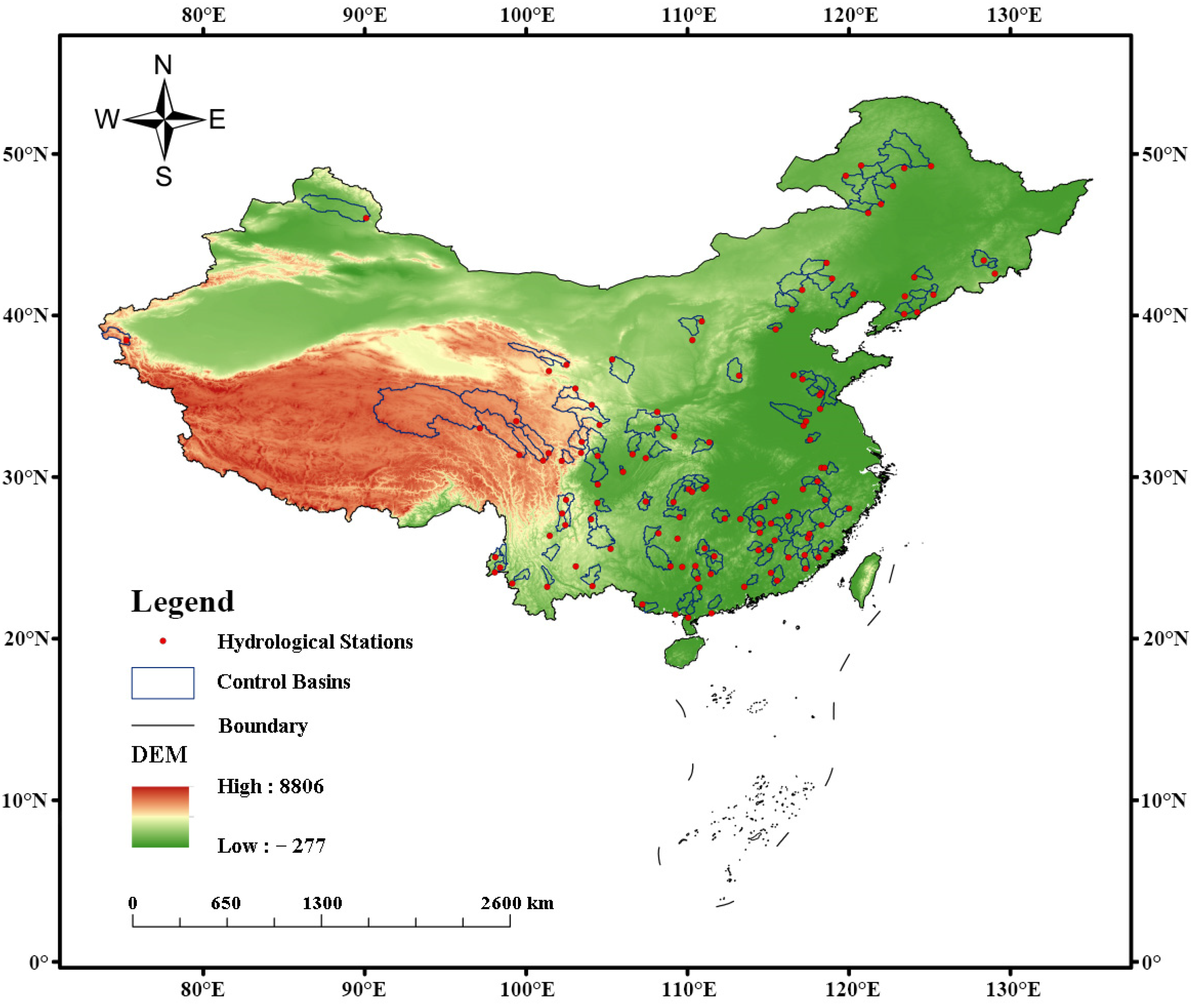

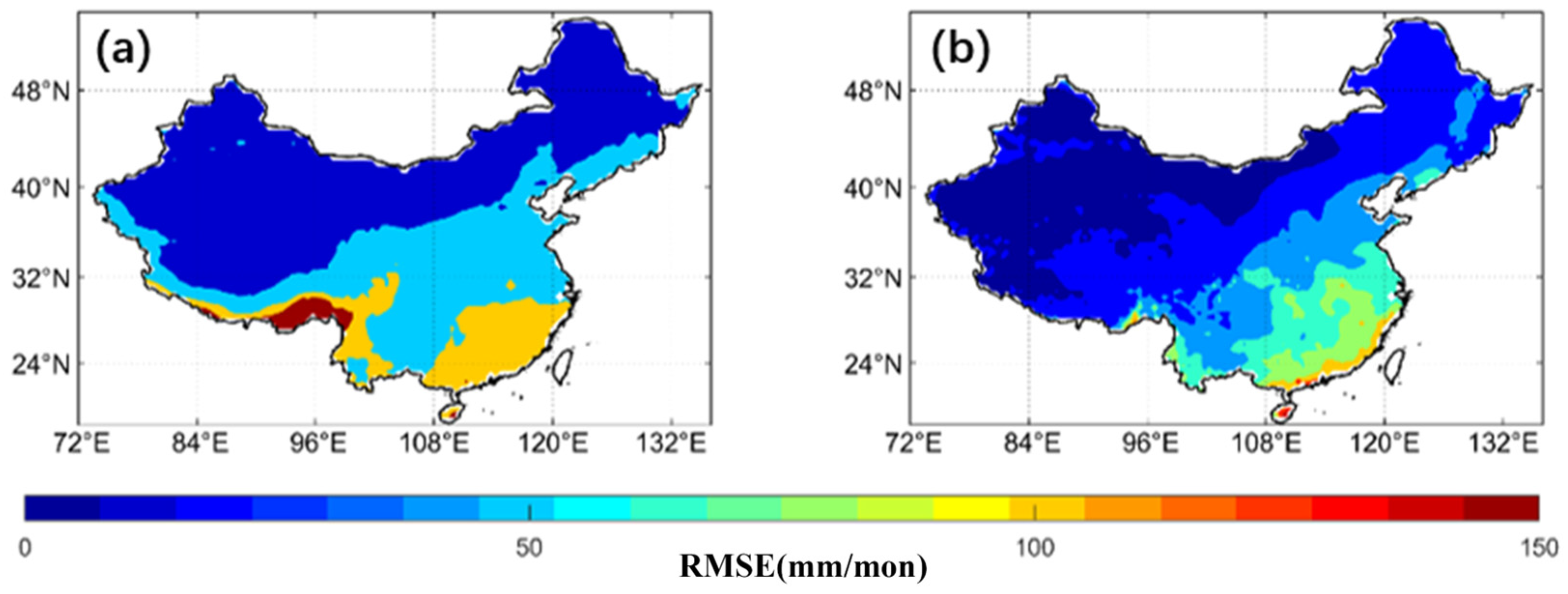




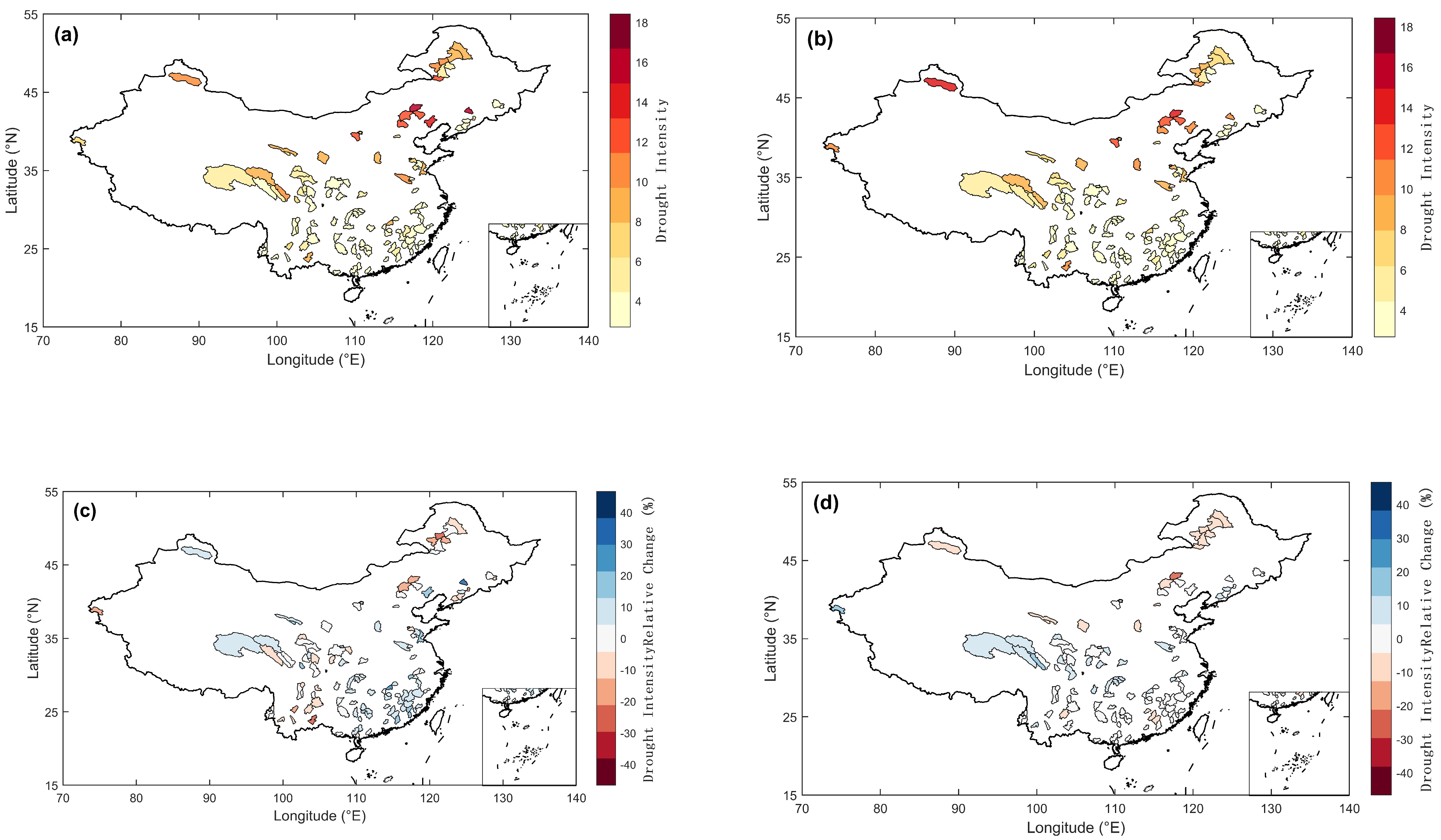


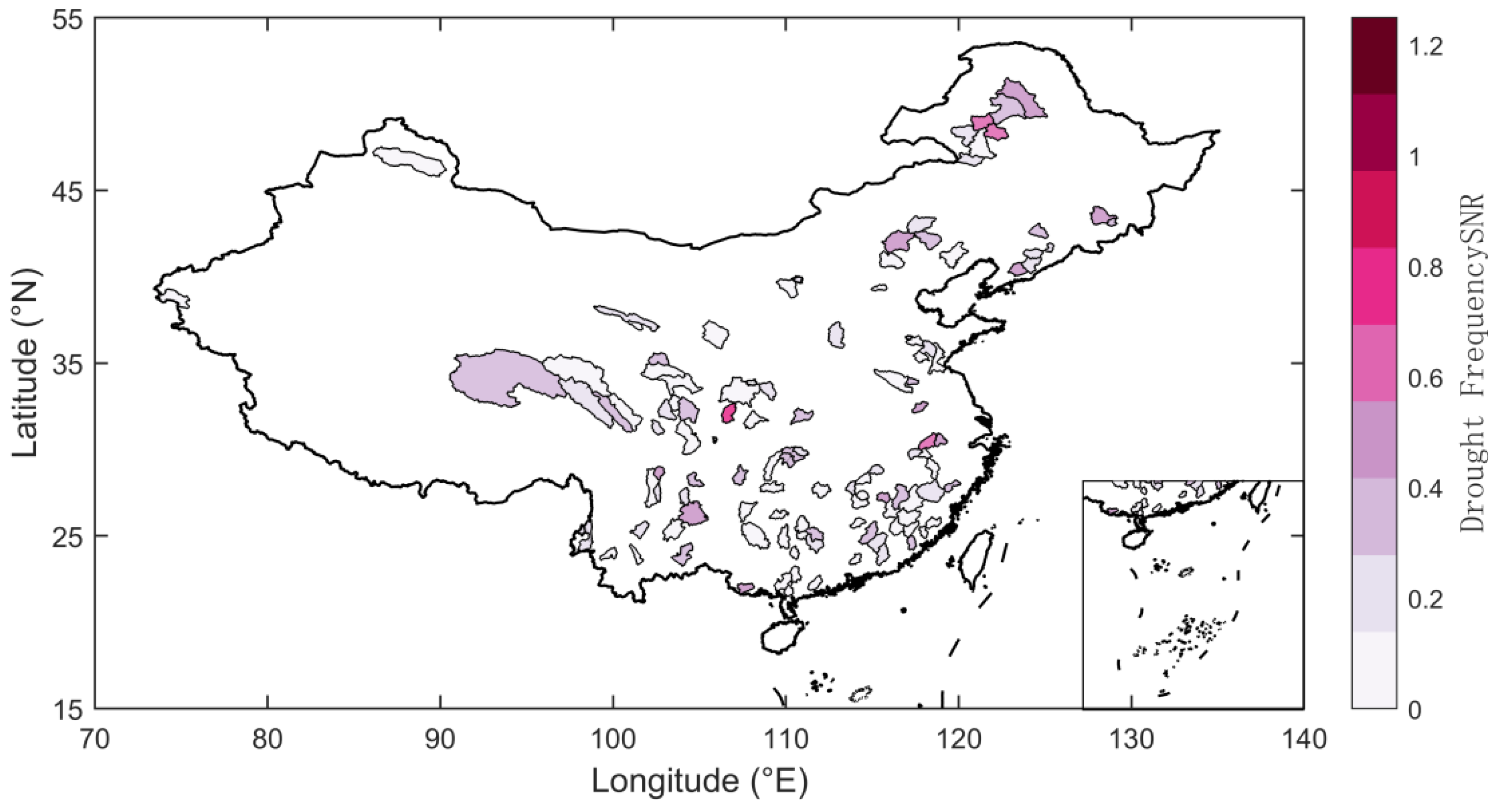
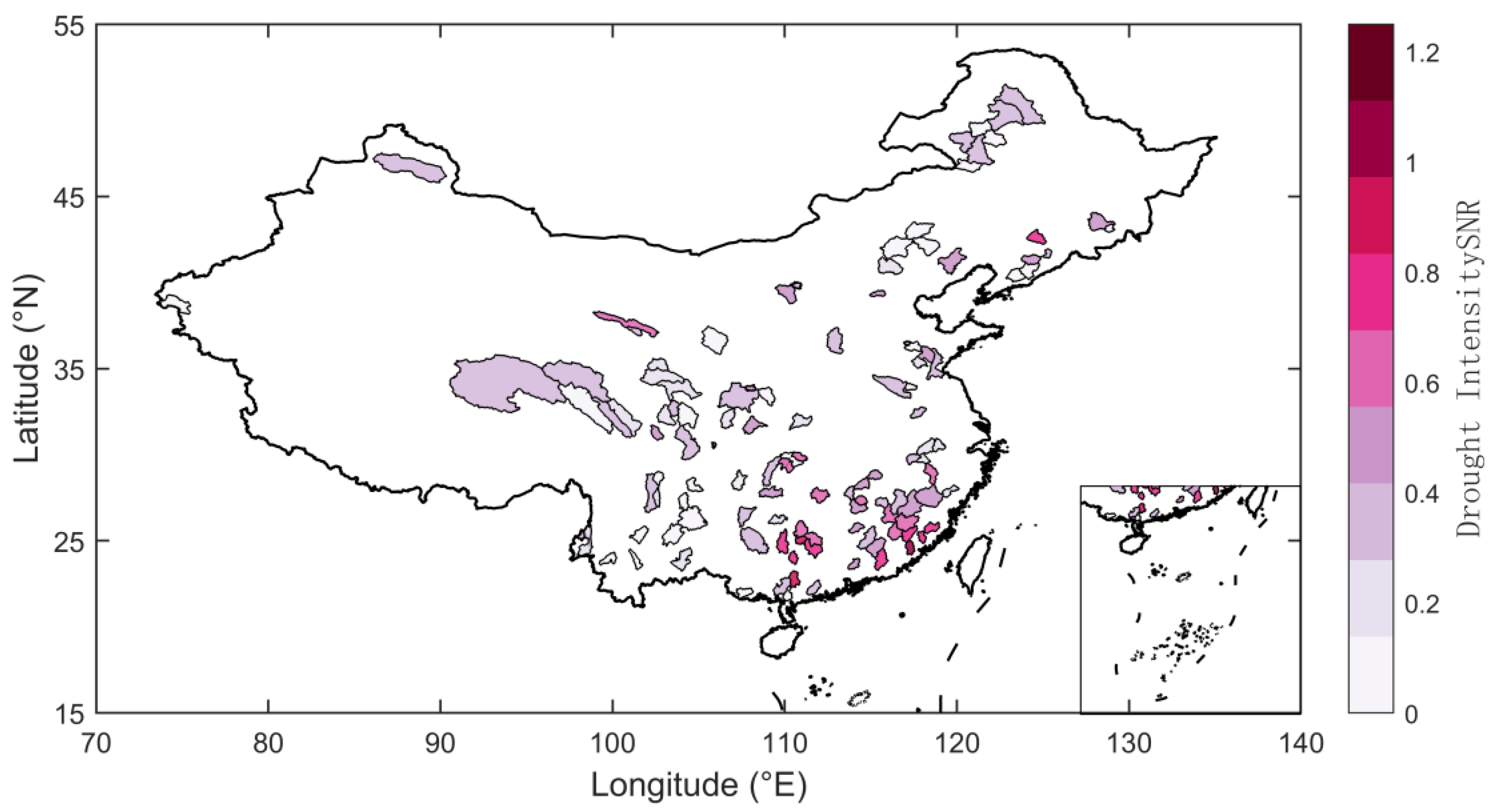
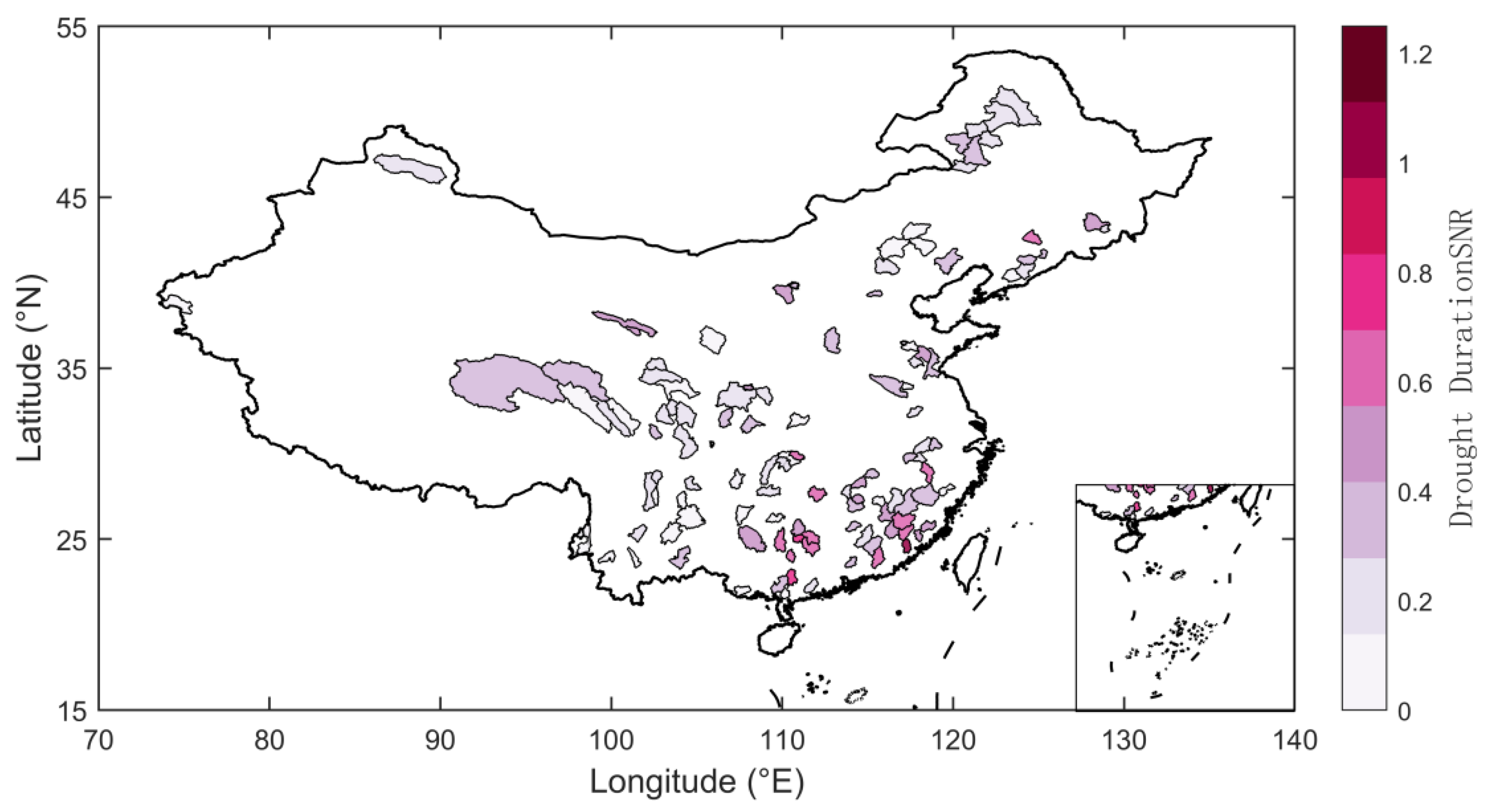



| No | Model Name | Research Institution | Horizontal Resolution |
|---|---|---|---|
| 1 | ACCESS-CM2 | CSIRO-ARCCSS | 1.8750° × 1.25° |
| 2 | ACCESS-ESM1-5 | CSIRO | 1.8750° × 1.25° |
| 3 | BCC-CSM2-MR | BCC | 1.125° × 1.1213° |
| 4 | CanESM5 | CCCma | 2.8125° × 2.7893° |
| 5 | CMCC-CM2-SR5 | CMCC | 1.25° × 0.9424° |
| 6 | FGOALS-g3 | CAS | 2° × 2.2785° |
| 7 | GFDL-ESM4 | NOAA-GFDL | 1.25° × 1° |
| 8 | MRI-ESM2-0 | MRI | 1.1250° × 1.1213° |
| 9 | NorESM2-MM | NCC | 1.25° × 0.9424° |
| 10 | INM-CM5-0 | INM | 2° × 1.5° |
| 11 | IPSL-CM6A-LR | IPSL | 2.5° × 1.2676° |
| 1 | ACCESS-CM2 | CSIRO-ARCCSS | 1.8750° × 1.25° |
Disclaimer/Publisher’s Note: The statements, opinions and data contained in all publications are solely those of the individual author(s) and contributor(s) and not of MDPI and/or the editor(s). MDPI and/or the editor(s) disclaim responsibility for any injury to people or property resulting from any ideas, methods, instructions or products referred to in the content. |
© 2025 by the authors. Licensee MDPI, Basel, Switzerland. This article is an open access article distributed under the terms and conditions of the Creative Commons Attribution (CC BY) license (https://creativecommons.org/licenses/by/4.0/).
Share and Cite
Li, H.; Wang, X.; Liu, X.; Wu, H.; Liu, Y.; Hu, H.; Cheng, C.; Peng, X.; Guo, J. Projection of Hydrological Drought in Chinese River Basins Under Climate Change Scenarios and Analysis of the Contribution of Internal Climate Variability. Water 2025, 17, 2736. https://doi.org/10.3390/w17182736
Li H, Wang X, Liu X, Wu H, Liu Y, Hu H, Cheng C, Peng X, Guo J. Projection of Hydrological Drought in Chinese River Basins Under Climate Change Scenarios and Analysis of the Contribution of Internal Climate Variability. Water. 2025; 17(18):2736. https://doi.org/10.3390/w17182736
Chicago/Turabian StyleLi, Haochuan, Xue Wang, Xinyi Liu, Han Wu, Yi Liu, Hai Hu, Cong Cheng, Xu Peng, and Jun Guo. 2025. "Projection of Hydrological Drought in Chinese River Basins Under Climate Change Scenarios and Analysis of the Contribution of Internal Climate Variability" Water 17, no. 18: 2736. https://doi.org/10.3390/w17182736
APA StyleLi, H., Wang, X., Liu, X., Wu, H., Liu, Y., Hu, H., Cheng, C., Peng, X., & Guo, J. (2025). Projection of Hydrological Drought in Chinese River Basins Under Climate Change Scenarios and Analysis of the Contribution of Internal Climate Variability. Water, 17(18), 2736. https://doi.org/10.3390/w17182736








